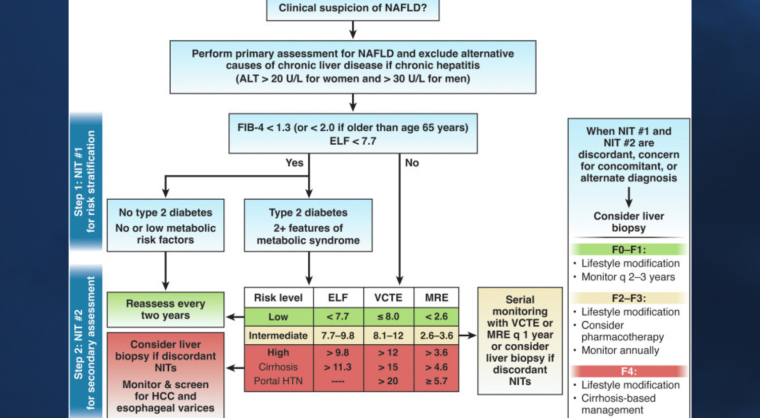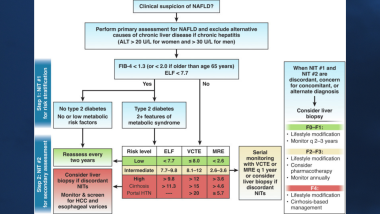Note: This clinical practice update was written prior to the publication of updated nomenclature re-naming NAFLD to MASLD.
Metabolic dysfunction-associated steatotic liver disease (MASLD) affects nearly 30% of the global population and is a growing cause of end-stage liver disease and liver-related health care utilization. Our new clinical practice update will help you leverage noninvasive biomarker tests to assess prognosis and identify individuals at high risk for disease progression.
Quick watch:
Drs. Julia Wattacheril and Manal Abdelmalek, authors of this clinical practice update, highlight the importance of screening for MASLD using noninvasive biomarkers.
Key takeaways
-
Noninvasive tests can improve detection in patients with advanced fibrosis who are at increased risk for cirrhosis, hepatic decompensation and hepatocellular carcinoma.
-
A combination of two or more noninvasive tests combining serum biomarkers and/or imaging-based biomarkers is preferred for staging and risk stratification of patients whose Fibrosis 4 Index score is greater than 1.3.
-
Liver biopsy should be considered for patients with noninvasive results that are indeterminate or when alternative etiologies for liver disease are suspected.
Read the full AGA Clinical Practice Update on the Role of Noninvasive Biomarkers in the Evaluation and Management of Nonalcoholic Fatty Liver Disease: Expert Review, published in the October issue of Gastroenterology.
See the full eight best practice advice statements on our clinical guidance page.













